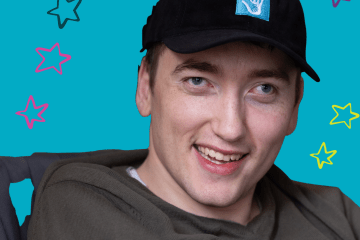Mutations Disrupting Neuritogenesis Genes Confer Risk for Cerebral Palsy.
AUTHORS:
Sheng Chih Jin, Sara A Lewis, Somayeh Bakhtiari, Xue Zeng, Michael C Sierant, Sheetal Shetty, Sandra M Nordlie, Aureliane Elie, Mark A Corbett , Bethany Y Norton, Clare L van Eyk, Shozeb Haider, Brandon S Guida, Helen Magee, James Liu, Stephen Pastore, John B Vincent, Janice Brunstrom-Hernandez, Antigone Papavasileiou, Michael C Fahey, Jesia G Berry, Kelly Harper, Chongchen Zhou, Junhui Zhang, Boyang Li, Jennifer Heim, Dani L Webber, Mahalia S B Frank, Lei Xia, Yiran Xu, Dengna Zhu, Bohao Zhang, Amar H Sheth, James R Knight, Christopher Castaldi, Irina R Tikhonova, Francesc López-Giráldez, Boris Keren, Sandra Whalen, Julien Buratti, Diane Doummar, Megan Cho, Kyle Retterer, Francisca Millan, Yangong Wang, Jeff L Waugh, Lance Rodan, Julie S Cohen, Ali Fatemi, Angela E Lin, John P Phillips, Timothy Feyma, Suzanna C MacLennan, Spencer Vaughan, Kylie E Crompton, Susan M Reid, Dinah S Reddihough, Qing Shang, Chao Gao, Iona Novak, Nadia Badawi, Yana A Wilson, Sarah J McIntyre, Shrikant M Mane, Xiaoyang Wang, David J Amor, Daniela C Zarnescu, Qiongshi Lu, Qinghe Xing, Changlian Zhu, Kaya Bilguvar, Sergio Padilla-Lopez, Richard P Lifton, Jozef Gecz, Alastair H MacLennan, Michael C Kruer
ABSTRACT:
In addition to commonly associated environmental factors, genomic factors may cause cerebral palsy. We performed whole-exome sequencing of 250 parent–offspring trios, and observed enrichment of damaging de novo mutations in cerebral palsy cases. Eight genes had multiple damaging de novo mutations; of these, two (TUBA1A and CTNNB1) met genome-wide significance.
We identified two novel monogenic etiologies, FBXO31 and RHOB, and showed that the RHOB mutation enhances active-state Rho effector binding while the FBXO31 mutation diminishes cyclin D levels. Candidate cerebral palsy risk genes overlapped with neurodevelopmental disorder genes. Network analyses identified enrichment of Rho GTPase, extracellular matrix, focal adhesion and cytoskeleton pathways. Cerebral palsy risk genes in enriched pathways were shown to regulate neuromotor function in a Drosophila reverse genetics screen.
We estimate that 14% of cases could be attributed to an excess of damaging de novo or recessive variants. These findings provide evidence for genetically mediated dysregulation of early neuronal connectivity in cerebral palsy.
FOR FULL ARTICLE: https://www.nature.com/articles/s41588-020-0695-1




